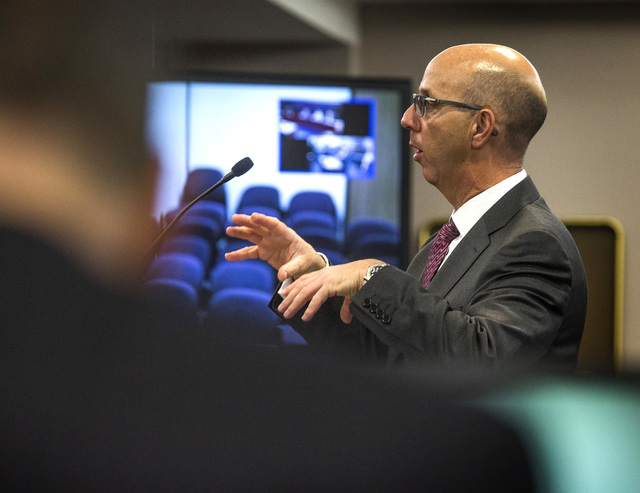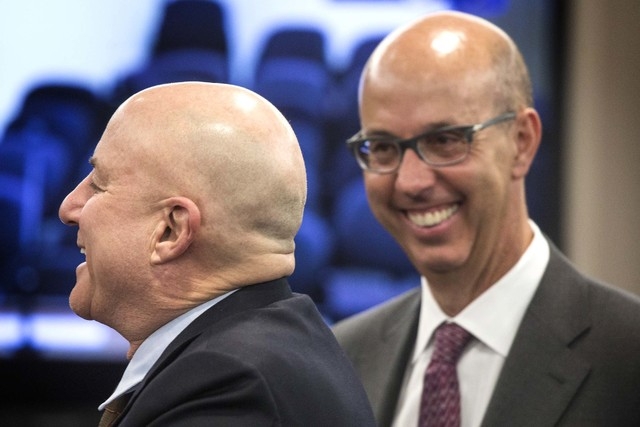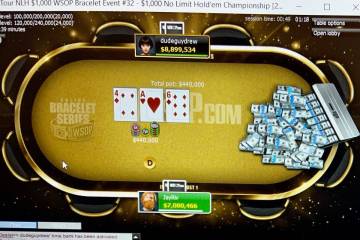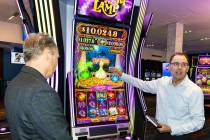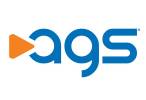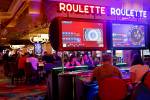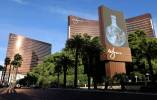Isaacs can thank Perelman for his exodus from exile
The irony was not lost on Gavin Isaacs.
On Nov. 21, 2013, Isaacs sat in the audience of the Nevada Gaming Commission hearing in the Sawyer Building. He watched as SHFL entertainment, where he was CEO for 32 months, was sold to slot machine giant Bally Technologies — his former employer — for $1.3 billion.
The next day, Isaacs was out of work and unsure about his future.
Funny how things work out.
Almost a year later — 364 days to be exact — Isaacs, 49, addressed the Gaming Commission as CEO of Scientific Games Corp. The New York-based lottery supplier gained approval to acquire Bally for $5.1 billion.
A day later the deal closed.
In a year, Isaacs went from unemployed to CEO of what has become the gaming industry’s most diversified global business with 10 components that touch all aspects of legalized gambling — lotteries, slot machines, table games, casino and lottery management systems and interactive gaming.
Isaacs, an Australia native, spent 12 years as a corporate lawyer in Sydney before becoming head of slot machine maker Aristocrat Leisure Ltd.’s legal department in 1999.
One wonders what the headhunter who connected Isaacs with the gaming industry must think 15 years later.
“I really never imagined all this 12 months ago,” Isaacs said at the Gaming Commission hearing. “I was just thinking about 12 months on the beach.”
The person to thank for his exodus from exile is Scientific Games Chairman Ronald Perelman.
The billionaire — 32nd on the Forbes 400 List with a net worth of $14.5 billion — contacted Isaacs in March and told him he bought out the remaining months on a noncompete clause that was part of the severance package he signed with Bally when he departed from SHFL.
Isaacs became a Scientific Games employee and a Perelman adviser.
Three months later, Perelman and Scientific Games’ board of directors named Isaacs CEO.
One month later, the deal to buy Bally for $3.3 billion in stock and $1.8 billion in debt, was announced.
Ironically, Isaacs’ noncompete clause would have expired Nov. 21, the same day the Bally sale closed.
“He had some things I needed him to do,” Perelman said in an interview after the regulatory hearing.
Perelman, 71, owns more than 30 percent of Scientific Games. His investment fund also owns a large stake in cosmetics giant Revlon.
Perelman had long been fascinated by the gaming industry. He told Nevada gaming regulators in 2013 that he once considered buying a destination resort on the Strip.
Instead, the lottery company — which supplies products to 39 of the 44 U.S. state-run lotteries and to 50 countries — focused on the slot machine side of the business. In October 2013, Scientific Games bought WMS Industries — the casino industry’s No. 3 supplier — for $1.5 billion.
With WMS, Bally and SHFL all under one roof — along with the lottery business — Scientific Games expects to have total annual revenue of more than $3 billion.
Perelman said he never expected Scientific Games to grow so rapidly.
“We couldn’t have put this all together without Gavin,” Perelman said. “He was the key to the whole deal.”
The Bally buyout took less than four months to close. State gaming regulators called the transaction “a clean deal.” It also helped that both Scientific Games and Bally had been in front of the regulators a year earlier for their respective deals.
Meanwhile, the other major gaming supplier merger — Italy-based lottery provider GTECH Holdings’ $6.4 billion purchase of slot machine manufacturer International Game Technology — won’t close until early next year.
That gives Isaacs time to remake Scientific Games to compete with the GTECH-IGT business. Analysts have already drawn up a comparison on the two conglomerates.
On the day the buyout closed, Isaacs announced a new management structure for the company that includes a senior management team with experience at Scientific Games, Bally, WMS and SHFL. Former Bally CEO Richard Haddrill remained connected as vice chairman.
The Bally buyout is expected to create $235 million in cost savings in the merged company’s first two years. Isaacs said much of the saving will come in the first year.
Without revealing too many trade secrets, Isaacs said each piece of the Scientific Games puzzle will have its own research and development arm. Also, products will be used across multiple platforms. For example, a Bally game will eventually work on a WMS slot machine. The slot machine games and SHFL’s unique table game titles will find their way into lottery and interactive products.
“We can become a substantial partner to the gaming industry,” Isaacs said.
Scientific Games sales executives will learn all of the company’s games and products.
Isaacs expects Scientific Games “will touch 100 percent of the customers 100 percent of the time.”
With 8,300 employees worldwide — including almost 1,400 in Nevada — Scientific Games is expected to centralize its corporate headquarters in Las Vegas.
Before SHFL was sold to Bally, Isaacs completed construction on a 110,000-square-foot SHFL headquarters on 9 acres near Jones Boulevard and 215 Beltway. Bally bought an additional 14 acres across the street in March for $5 million.
Isaacs, who spent five years as Bally’s chief operating officer, has a loyalty to the SHFL brand. He oversaw the company’s renaming from Shuffle Master Gaming in October 2012 and he plans to reintroduce the SHFL name as a subsidiary of Scientific Games.
“It can be used to the benefit of the company because it has some tremendous table game products,” Isaacs said.
At last month’s commission hearing, Isaacs pulled up his suit jacket sleeve to show off custom-made SHFL cuff links adorning his dress shirt.
Howard Stutz’s Inside Gaming column appears Wednesdays and Sundays. He can be reached at hstutz@reviewjournal.com or 702-477-3871. Find him on Twitter: @howardstutz.



